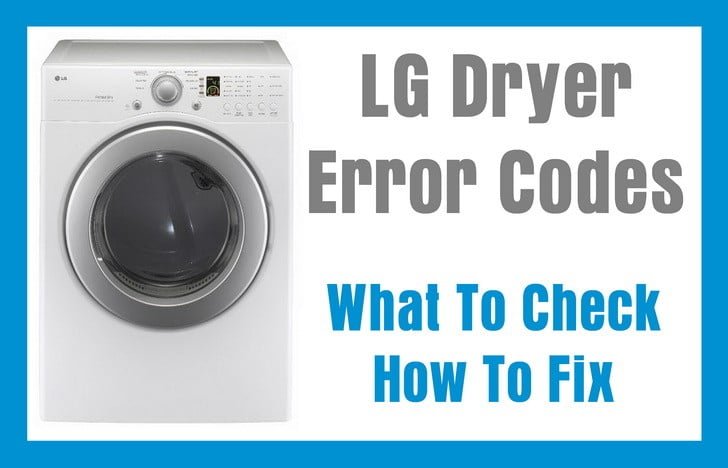
The “HE” error code stands for “Heating Error,” and it’s your dryer’s way of telling you something’s up with its heating system. Imagine your dryer like a giant hairdryer. If the heat isn’t working properly, your clothes are going to come out damp and cold, which isn’t what anyone wants. Ignoring this code might seem tempting, especially if the dryer still turns on and spins. However, it’s like ignoring a check engine light on your car – it might keep running for a while, but you’re risking bigger problems down the line.
Understanding the Causes of the HE Error Code
So, what’s causing your dryer to flash this dreaded error? In most cases, the “HE” code is triggered because the dryer isn’t heating up as it should. One common culprit could be the thermal fuse. Think of it like a safety net; if your dryer overheats, the thermal fuse will blow to prevent any potential fire hazard. When this happens, the dryer can’t heat up, leading to that pesky HE code.
Another possibility is a problem with the dryer’s heating element. This is the part actually responsible for heating the air inside your dryer. If it’s broken or malfunctioning, then your dryer simply cannot produce the heat needed to dry your clothes effectively. It’s like trying to make toast with a toaster that doesn’t heat up – you’re just spinning your wheels.
Finally, the issue could also be with the high limit thermostat or cycling thermostat. These components help regulate the temperature inside the dryer. If either is faulty, your dryer might falsely register a heating issue, kicking out the HE code in the process. Understanding these causes can guide you in diagnosing the problem properly before it potentially worsens.
Should You Ignore the HE Error Code?
Now you might think, if the dryer still turns on and spins, can’t you just ignore it? Well, not really. Ignoring the HE error code is like ignoring an early warning sign for a more serious issue. You might get away with it short-term, but ultimately, you’re risking a complete breakdown or even potential safety hazards.
Operating a dryer with a heating issue can lead to inefficient drying cycles, which means clothes aren’t drying properly. This can lead to moldy smells or even damaged clothes due to prolonged exposure to moisture. Plus, running the dryer inefficiently can hike up your energy bills. It’s like leaving a window open while the heater’s on – a waste of energy and money.
Therefore, while it might be tempting to ignore the problem, dealing with it head-on can save you from future headaches. After all, a fully functioning dryer is not only a convenience but also a necessity in most households. Addressing the HE error code promptly ensures your dryer keeps running smoothly and safely.
How to Fix the HE Error Code
Fixing the HE error code isn’t necessarily a task for the faint-hearted, but with a bit of patience and guidance, you can tackle it. First, check if the thermal fuse has blown. You can usually find this small, white part near the blower housing or on the dryer’s heat source. If it’s blown, you’ll need to replace it to restore heat to your dryer.
Next, inspect the heating element. With the dryer unplugged, you can locate the element by removing the back panel and performing a continuity test with a multimeter. If the element shows no continuity, it’s time for a replacement. Remember, working with electrical components can be dangerous, so ensure the appliance is completely powered off before attempting any repairs.
If the thermal fuse and heating element appear intact, the issue might lie with one of the thermostats. These require a similar continuity test to determine if they’re working properly. If they fail the test, replacing them should resolve the error. If all else fails, it might be best to consult with a professional appliance repair technician to ensure the repair is done correctly and safely.
Preventing Future HE Error Codes
Once you’ve resolved the error, you definitely want to avoid a repeat performance. Regular maintenance is key to preventing future HE codes. Start by cleaning the lint filter after every drying cycle. A clogged filter can reduce air circulation, causing the dryer to overheat and potentially blow the thermal fuse.
Additionally, make it a habit to check and clean the dryer vent system at least once a year. This includes the vent hose and the external vent opening. If these areas become blocked with lint, hot air can build up inside the dryer, leading to overheating issues.
Lastly, avoid overloading the dryer. Overstuffing it can obstruct airflow and cause the dryer to overwork, increasing the risk of overheated components. By following these simple preventative tips, you can keep your dryer in top condition and avoid that pesky HE error code in the future.